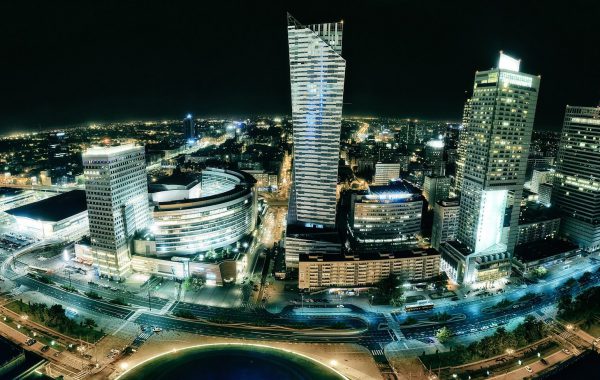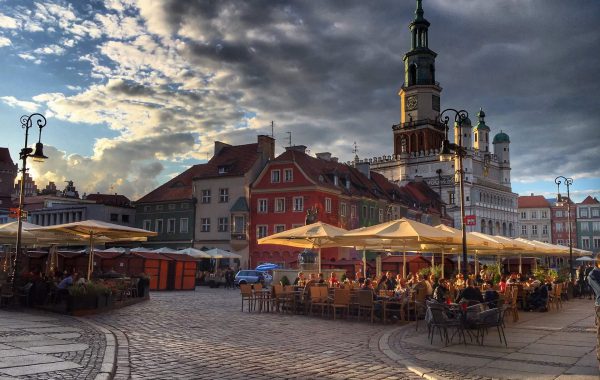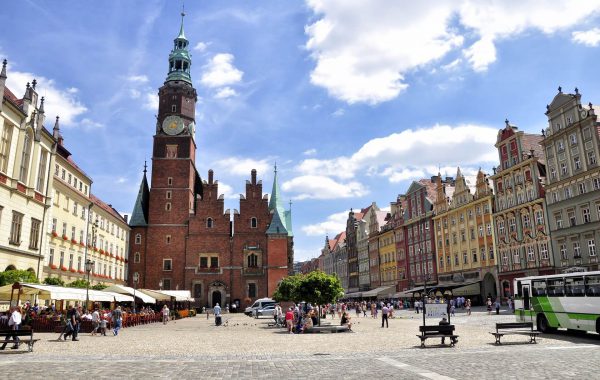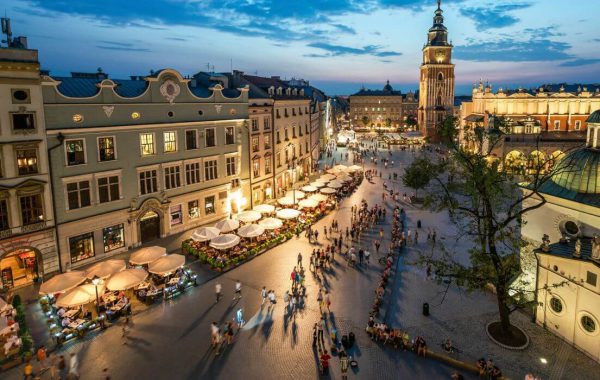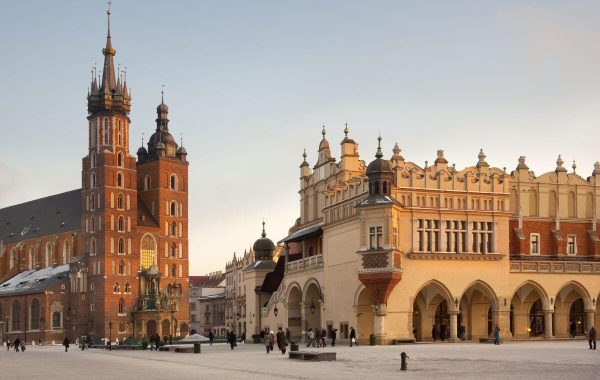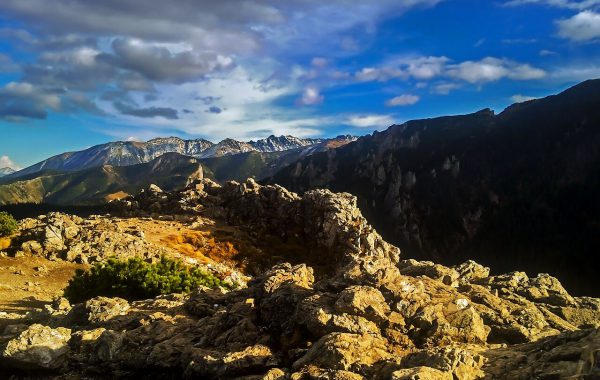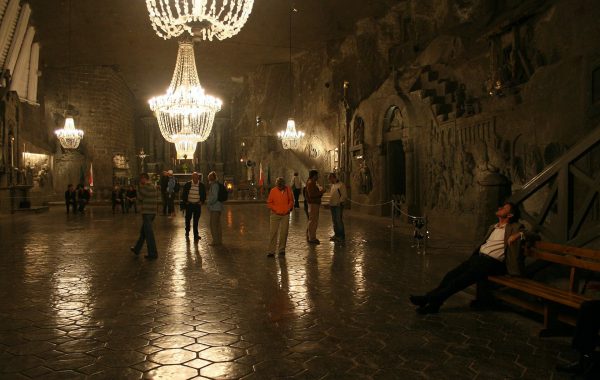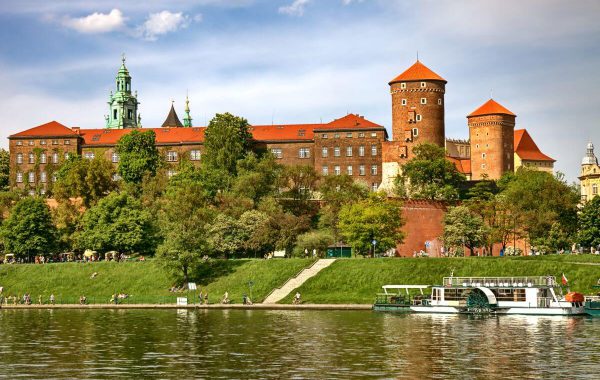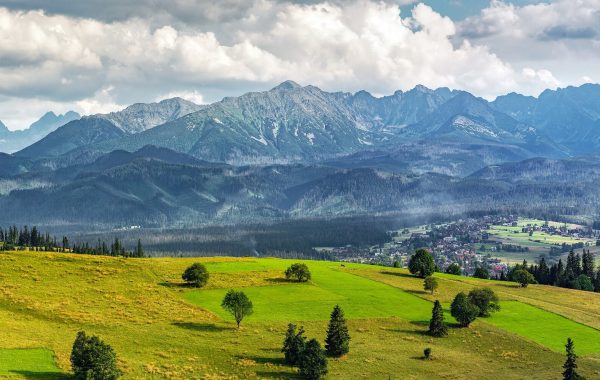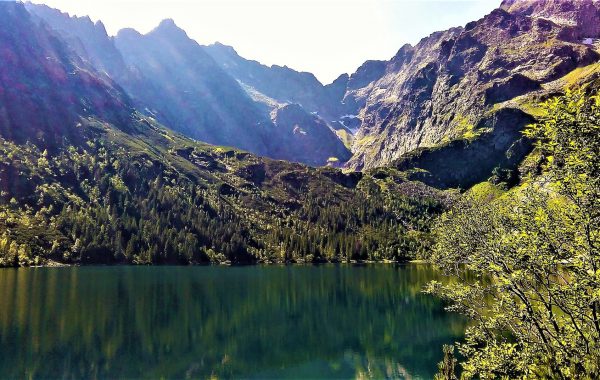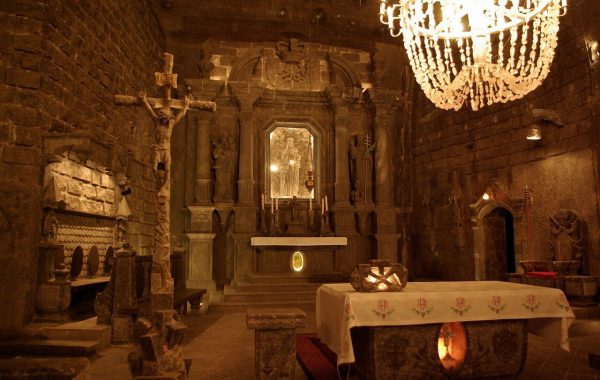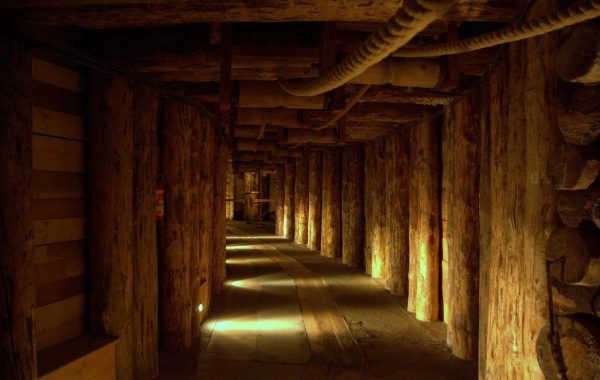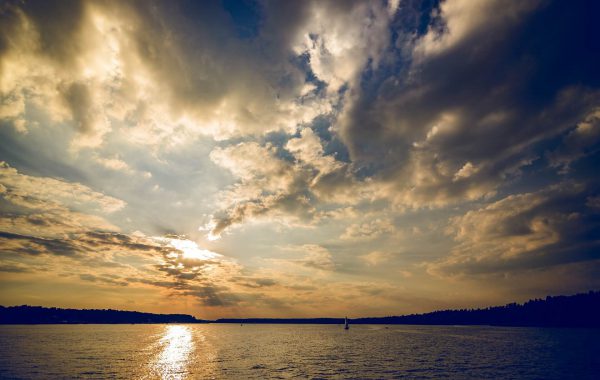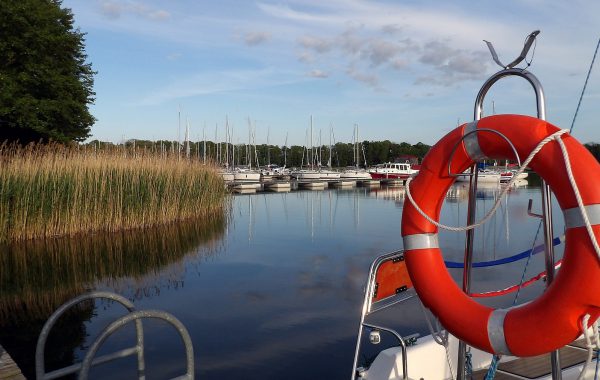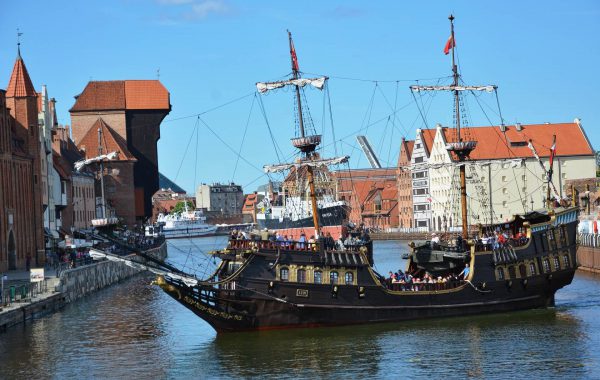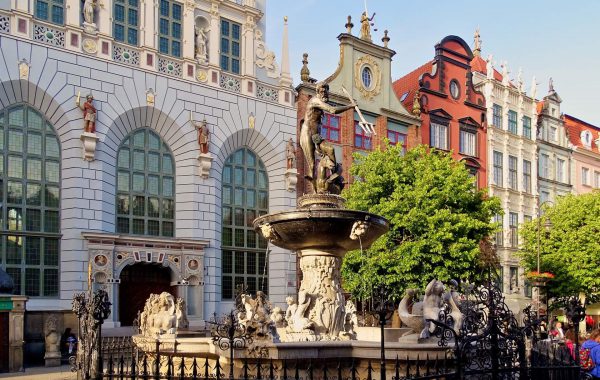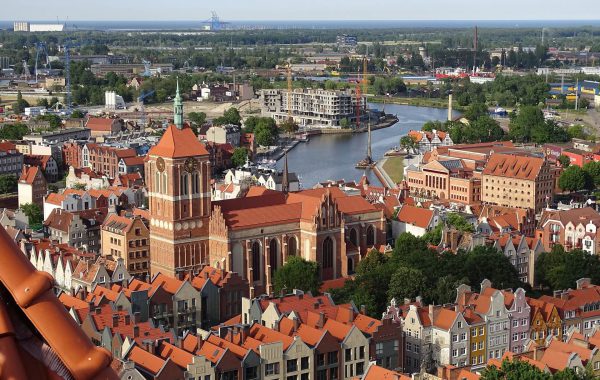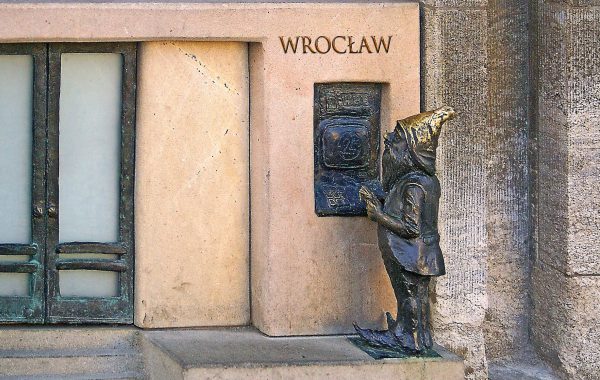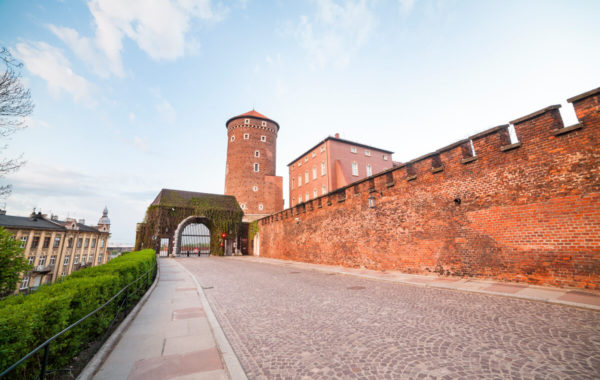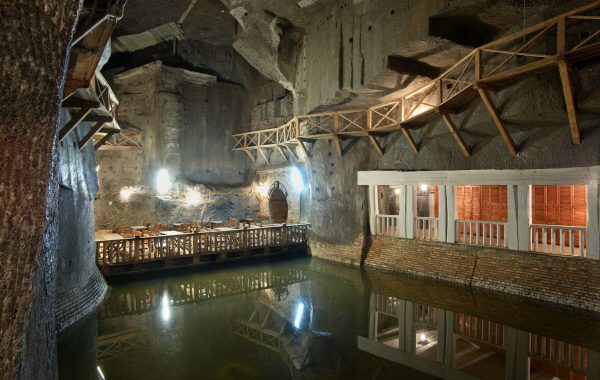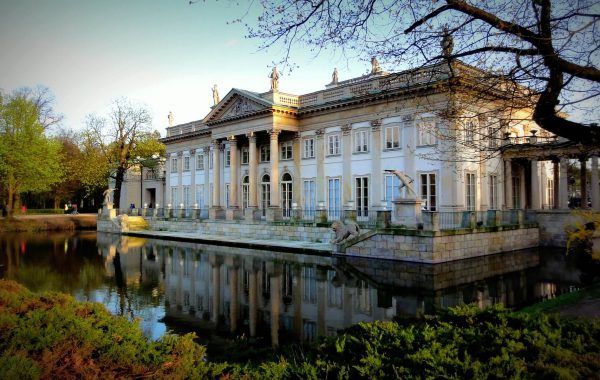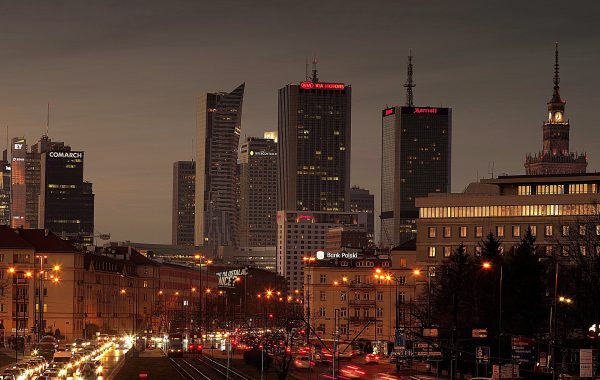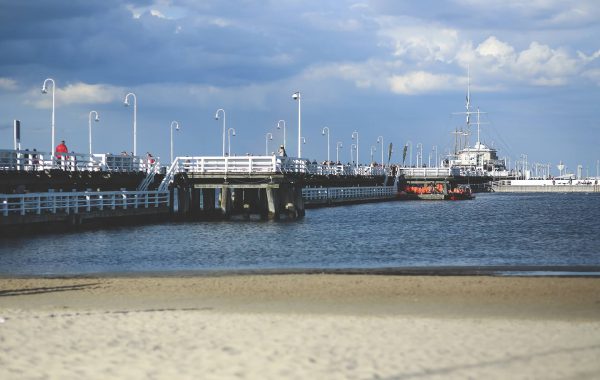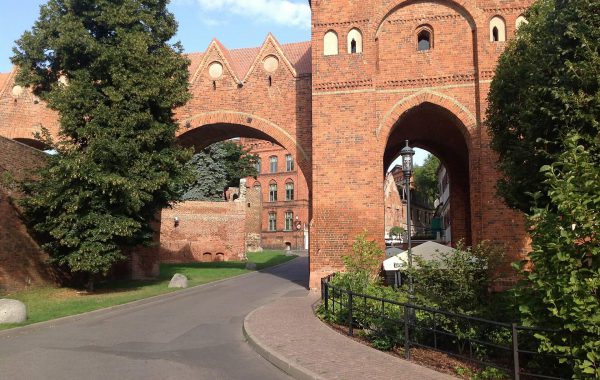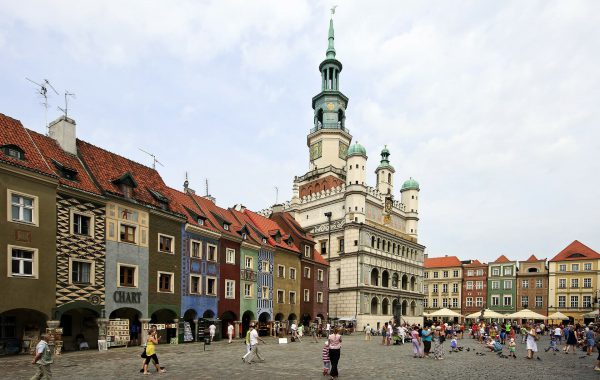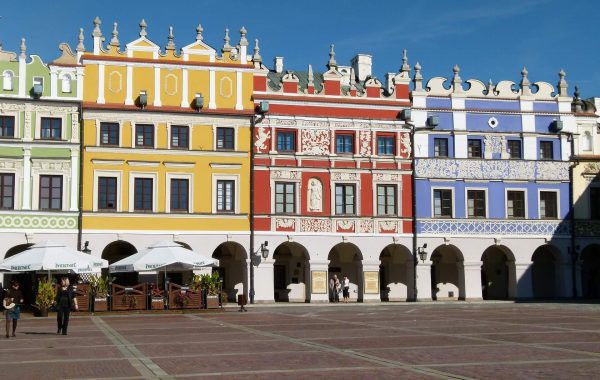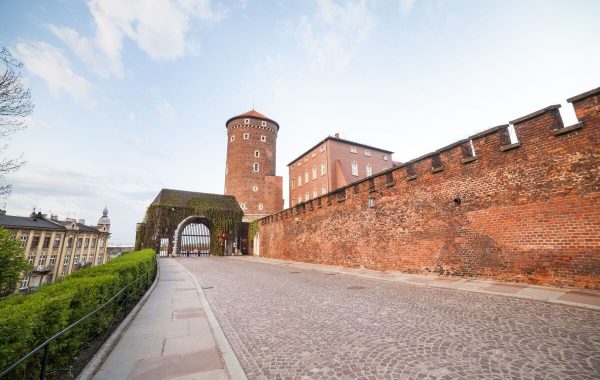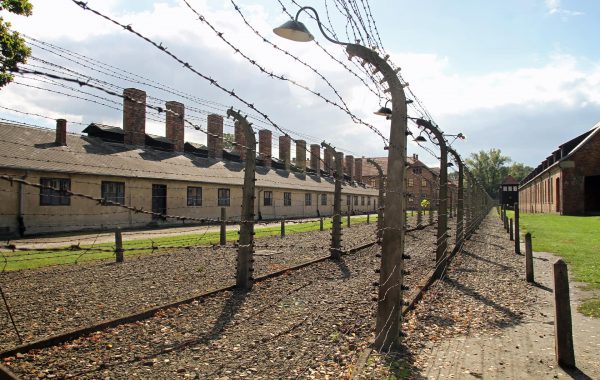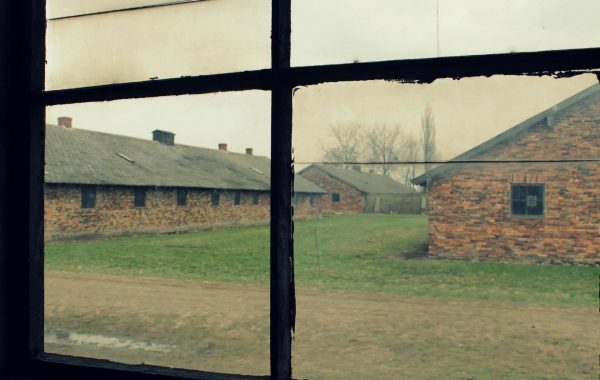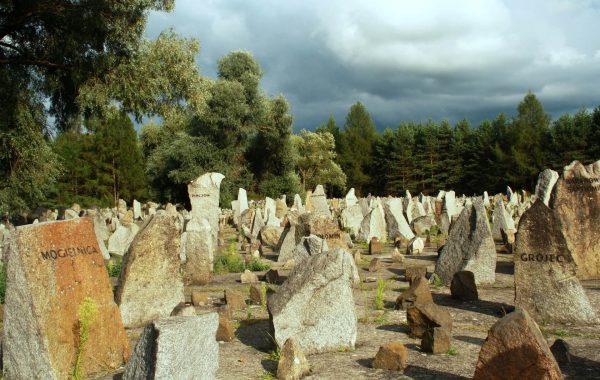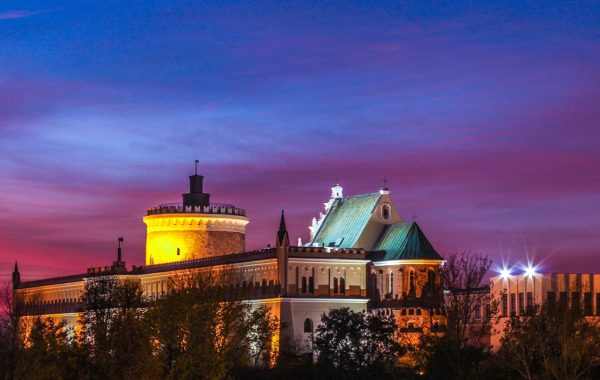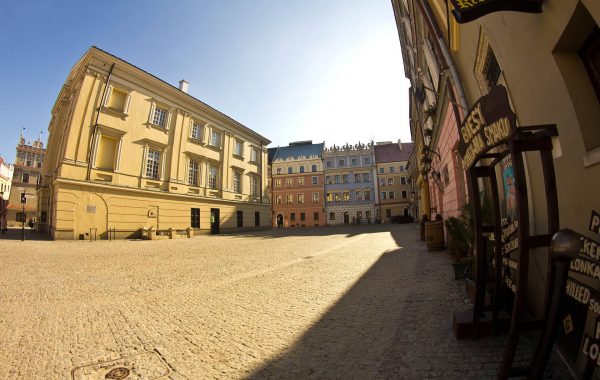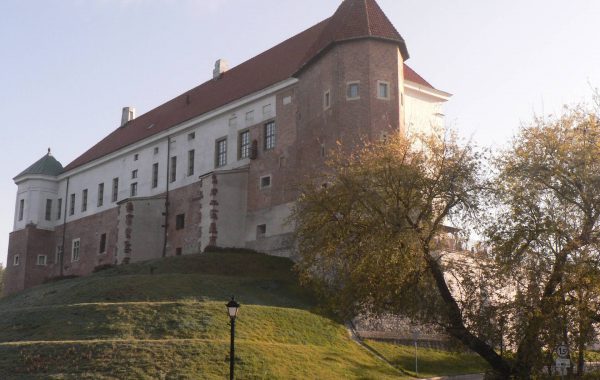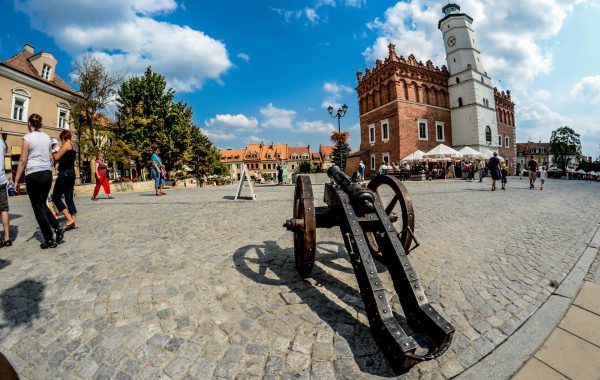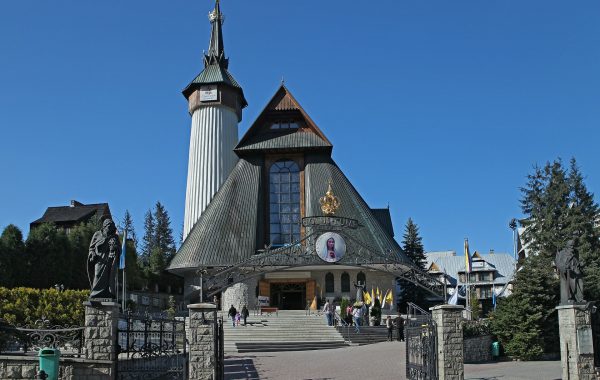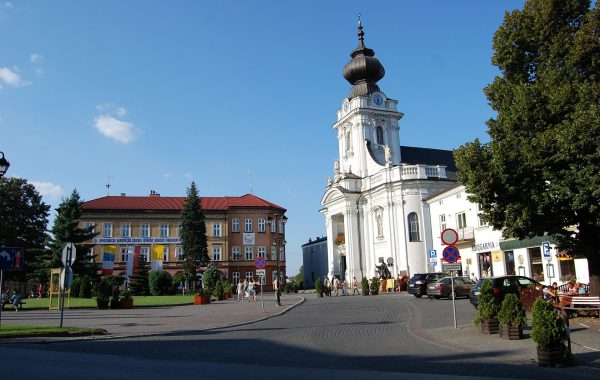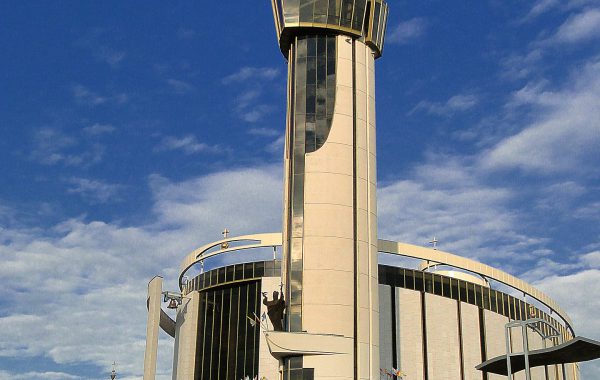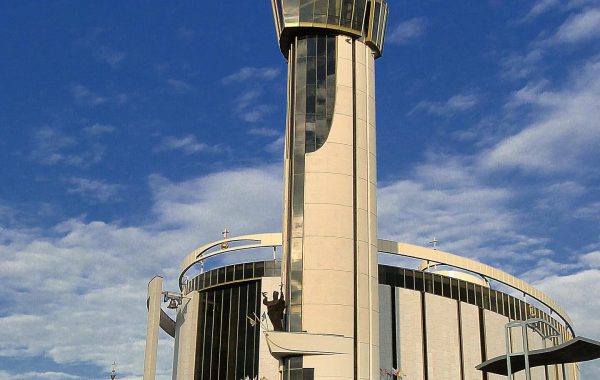Leisure Travel
At Intercrac we have the local expertise and experience needed in providing creative programmes and fascinating itineraries to any part of Poland. We specialise in group travel and FIT. We manage projects that require experiential travel programmes. From arts and culture, to sports tours, we will arrange all of your accommodation, flights, ground handling services and transfers.
Groups and Special Interest Tours
Intercrac presents a wide offer of programs that include all the “must to be seen” places while in Poland. Classic Tours will lead your clients through the most famous cities, such as: Warsaw – the capital of Poland, Krakow – the cultural capital of Poland, Czestochowa – the religious and spiritual center of Poland, Zakopane – the fascinating center of Polish highlanders’ folklore culture and Gdansk – the birthplace of Solidarity and the Baltic city of amber.
Individuals
Be it a leisurely self-drive, a family holiday or a polish adventure our team will put together a programme specifically created to suit the exact requirements and budget available, helping guests get the most out of their visit to our beautiful region.
From deluxe holidays to lower budget, we sculpt programmes specifically for each guest, including must-see places such as Krakow, Wieliczka Salt MInes, Warsaw, Gdansk, Tatra Mountain and the Mazury Lakes, as well as the lesser known and possibly wilder areas which give our visitors an insight into our incredible history, our mix of landscapes, the hospitality of polish people.
We offer our Individual Travellers the same meticulous level of service, whether they require a luxury escorted tour or a good value self-drive programme.
Sample Programs
The best of Poland
Day 1 – Warsaw
Arrive at Warsaw airport, transfer to the hotel, then dinner and overnight stay in Warsaw.
Day 2 – Warsaw
Breakfast, city sightseeing tour of the Old Town with St. John’s Cathedral, the Royal Castle and the beautiful palatial and park complex of Łazienki. In the afternoon, a visit to the palace in Wilanów – King Jan III Sobieski’s residence; dinner and overnight stay in Warsaw.
Day 3 – Warsaw – Częstochowa – Kraków
Breakfast, departure for Częstochowa – a visit to the Pauline Monastery housing the Holy Icon of the Black Madonna, departure for Kraków. Dinner and overnight stay in Kraków.
Day 4 – Kraków
Breakfast, city sightseeing tour of the Old Town, Wawel Royal Castle and Kazimierz – the Jewish district. In the afternoon, an optional excursion to the former Nazi concentration camp in Auschwitz-Birkenau. Dinner and overnight stay in Kraków.
Day 5 – Kraków – Zakopane – Kraków
Breakfast, excursion to Zakopane – the capital of the Tatra Mountains and the centre of the highlanders’ folklore, return to Kraków. Dinner and overnight stay in Kraków.
Day 6 – Kraków
Breakfast, a visit to the famous Salt Mine in Wieliczka – one of the wonders of the world. Afternoon at leisure, optional traditional dinner at a stylish restaurant, accompanied by folk music and songs, overnight stay in Kraków.
Day 7 – Kraków
Breakfast, optional excursion to the Ojcowski National Park and Gothic Castle in Pieskowa Skała with a collection of European art from the Middle Ages to mid 19th c., then return to Kraków. Dinner and overnight stay in Kraków.
Breakfast, transfer to the airport, departure.
From Warsaw to the Baltic Coast
Day 1 – Warsaw
Arrive at Warsaw airport, transfer to the hotel, sightseeing of the Old Town: Royal Castle, St. John’s Cathedral and Barbican. Dinner and overnight stay in Warsaw.
Day 2 – Warsaw
Breakfast, city sightseeing tour: the Palace of the Culture and Science – the gift of Stalin, the beautiful palatial and park complex of Łazienki and the palace in Wilanów – King Jan III Sobieski’s residence; dinner and overnight stay in Warsaw.
Day 3 – Warsaw – Żelazowa Wola – Toruń
Breakfast, departure for Toruń, en route a visit to the house of Frederic Chopin in Żelazowa Wola – a romantic country manor. Then arrival in Toruń – the city of the great astronomer Nicolaus Copernicus, city sightseeing – the Old Town including Copernicus’ house. Dinner and overnight stay in Toruń.
Day 4 – Toruń – Mazury – Mikołajki
Breakfast, departure for the beautiful Mazury Lake District; a visit to St. Lipka – one of the most important of Our Lady’s sanctuaries and Gierłoż – the Wolf’s Lair – Hitler’s headquarters built in 1940. Dinner and overnight stay in Mikołajki.
Day 5 – Mikołajki – Malbork – Gdańsk
Breakfast, excursion to the castle in Malbork – former residence of the Masters of the Teutonic Knights Order and now a museum with an interesting collection of amberware. Departure for Gdańsk – the city of the first leader of “Solidarity” Lech Wałęsa. Dinner and overnight stay in Gdańsk.
Day 6 – Gdańsk – Gdynia – Sopot
Breakfast, sightseeing of the Tri-city – the Old Town with Długi Targ and Mariacka streets – the two most beautiful streets in Gdańsk, Oliwa Cathedral with the famous organ, the shipyard in Gdańsk – the seat of “Solidarity”, Westerplatte – symbol of World War II, the harbour city of Gdynia and the well known spa – Sopot. Dinner and overnight stay in Gdańsk.
Day 7 – Gdańsk
Breakfast, transfer to the airport, departure.
The Splendours of Poland
Day 1 – Wrocław
Arrival in Wrocław, situated on the Odra river with many canals and bridges. Sightseeing round Ostrów Tumski – an island on the river – and the oldest part of the city. Dinner and overnight stay in Wrocław.
Day 2 – Wrocław – Brzeg – Opole – Kraków
Breakfast, departure for Kraków, en route a visit to the castle in Brzeg – the pearl of the Silesian Renaissance, and called the Silesian Wawel, and a tour of Opole with its medieval Old Town. In the centre of the city, there is the Gothic Cathedral, a Franciscan Monastery and Church, remnants of the city walls and bastions, and a beautiful Old Town Square. Arrival in Kraków for dinner and overnight stay.
Day 3 – Kraków – Wieliczka
Breakfast, city sightseeing – the heart of Kraków – the Main Market Square with its magnificent Renaissance building – The Cloth Hall – in the centre of the square, and the impressive St Mary’s Church in the corner; Wawel hill with the Royal Castle, Cathedral and Cathedral Museum. In the afternoon, an excursion to the famous Salt Mine in Wieliczka, with many chambers and corridors carved in salt, placed by UNESCO on the World Cultural Heritage List in 1978; return to Kraków, dinner and overnight stay in Kraków.
Day 4 – Kraków – Częstochowa – Warsaw
Breakfast, departure for Częstochowa – a visit to the Pauline Monastery housing the Holy Icon of the Black Madonna. The tradition of pilgrimages to Częstochowa dates back to 1392, when the monastery was established. Departure for Warsaw, dinner and overnight stay in Warsaw.
Day 5 – Warsaw – Żelazowa Wola
Breakfast, city tour of the Polish capital – the Old Town with the Royal Castle, St. John’s Cathedral, Barbican and Łazienki Palace and Park; in the afternoon – a visit to the house of Frederic Chopin in Żelazowa Wola – a romantic country manor; return to Warsaw, dinner and overnight stay in Warsaw.
Day 6 – Warsaw – Mazury – Malbork – Gdańsk
Breakfast, departure for the beautiful Mazury Lake District. A tour of the region en route to Gdańsk, including a visit to the castle in Malbork, the former residence of Masters of Teutonic Knights Order and now a museum with an interesting collection of amberware. Departure for Gdańsk – the city of the first leader of “Solidarity” Lech Wałęsa. Dinner and overnight stay in Gdańsk.
Day 7 – Gdańsk – Gdynia -Sopot
Breakfast, sightseeing of the Tricity – the Old Town with Długi Targ and Mariacka streets – the two most beautiful streets in Gdańsk, Oliwa Cathedral with the famous organ and the shipyard in Gdańsk – the seat of “Solidarity”, Westerplatte – the symbol of World War II, the harbour city of Gdynia and the well known spa of Sopot. Dinner and overnight stay in Gdańsk.
Day 8 – Gdańsk – Toruń – Poznań
Breakfast, departure for Poznań; en route sightseeing of Toruń – the city of the great astronomer Nicolaus Copernicus – including the Old Town with Copernicus’ house; arrival in Poznań – a cradle of Polish state; city tour including the Old Town Square with the beautiful Renaissance Town Hall and the modern trade area; dinner and overnight stay in Poznań.
Day 9 – Poznań
Breakfast, departure.
On the Trail of the UNESCO List in Poland
Day 1 – Warsaw
Arrival at Warsaw airport, transfer to the hotel, dinner and overnight stay in Warsaw.
Day 2 – Warsaw – Białowieża
Breakfast, sightseeing of the Polish capital – the Old Town with the Royal Castle, St. John’s Cathedral, Barbican and Łazienki palace and park; departure for Białowieża, dinner and overnight stay in Białowieża.
Day 3 – Białowieża – Lublin – Zamość
Breakfast, excursion to the natural forest complex of Białowieża with the bison reserve – the biggest European mammals. Then departure for Zamość, with en route sightseeing of Lublin – the biggest city of central eastern Poland and an important academic centre. Dinner and overnight stay in Zamość.
Day 4 – Zamość – Leżajsk – Rzeszów
Breakfast, sightseeing of Zamość, drive to Rzeszów via Leżajsk which is famous for its Renaissance/Baroque Church with 17th century pipe organs. Dinner and overnight stay in Rzeszów.
Day 5 – Rzeszów – Łańcut – Wieliczka – Kraków
Breakfast, excursion to Łańcut with a visit to the Łańcut palace housing Europe’s biggest collection of horse-drawn carriages, a collection of sculpture and paintings and old furniture. Drive to Wieliczka to visit the Salt Mine and arrive in Kraków for dinner and overnight stay.
Day 6 – Kraków – Kalwaria Zebrzydowska – Kraków
Breakfast, half-day city tour of Kraków, including Wawel Royal Castle and Old Town. In the afternoon an excursion to Kalwaria Zebrzydowska to visit the Bernardine church, monastery and chapels; return to Kraków for dinner and overnight stay.
Day 7 – Kraków – Auschwitz – Kraków
Breakfast, departure for Auschwitz-Birkenau and visit to the Martyrdom Museum Return to Kraków for dinner and overnight stay.
Day 8 – Kraków
Breakfast, transfer to the airport, departure.
The Judaics of Poland
Day 1 – Warsaw
Arrival at Warsaw airport, transfer to the hotel. Introductory walk around the Old Town, dinner and overnight.
Day 2 – Warsaw
Sightseeing tour of the city and Judaics, the area of the former Jewish district, and sites connected with the Ghetto Uprising in 1943, including the Memorial to the Heroes of the Warsaw Ghetto designed by Natan Rappaport, the Judenrat building, the site of Anielewicz’s bunker and the Umschlagplatz. You will also see the Jewish Cemetery, which survived Nazi destruction, the Jewish Historical Institute, which boasts the largest collection of Judaics, and the Nozyk Synagogue founded in 1902 by Zalman Nożyk, a Warsaw merchant. Dinner and overnight in Warsaw
Day 3 – Warsaw – Treblinka – Lublin
Departure to Treblinka, the former Nazi death camp where approximately 800 000 Jews were killed and now a monument-mausoleum and symbolic cemetery. Drive to Lublin, tour of the city; cemetery with the graves of many well-known rabbis, the Talmudic Academy of Lublin – the old educational centre of Jews in Poland, and the Synagogue. Dinner and overnight in Lublin.
Day 4 – Lublin – Majdanek – Sandomierz – Kraków
Drive to Majdanek for a tour of the former Nazi concentration camp preserved for posterity which saw the killing of 250 000 Jews from the Warsaw and Lublin Ghettos. Continue to Sandomierz to see the baroque Synagogue built in 1758 and the cemetery with a memorial created of broken tombstones. Arrive to Kraków, dinner and overnight.
Day 5 – Kraków – Wieliczka
Guided tour of Kraków: Old Town, Wawel Royal Castle and Cathedral, and Kazimierz – the old Jewish town with its autonomous community (Kahal), the remains of the medieval Ghetto walls. The Museum of the History of Jews in Poland lies in the heart of Kazimeirz in the oldest synagogue in Poland, which dates back to 1470. Visit the Old Jewish cemetery (Kirkut Remuh), the Remuh Synagogue from the 16th century and the grave of Rabbi Isserles, a wall built after the war out of gravestones from the section of the cemetery destroyed by the Nazis. In the afternoon, there is an excursion to Wieliczka to visit the Salt Mine, one of the oldest mines in Europe and placed by UNESCO on the list of the 12 most priceless monuments of the world in 1978. Dinner and overnight in Kraków.
Day 6 – Kraków – Auschwitz – Kraków
Trip to Auschwitz-Birkenau. This was the largest Nazi extermination camp and now houses the Martyrdom Museum. Visit to both camps, then return to Kraków. Dinner at the Ariel restaurant in the Kazimierz quarter.
Day 7 – Kraków – Łódź – Warsaw
Drive to Warsaw, stop in Łódz for a tour tracing the “cotton empire” of Israel Kalmanowicz Poznański; the factory buildings, residential buildings for the workers, the palace of Israel Poznański, the former Ghetto area and the 19th century Jewish cemetery – the biggest in Poland. Arrival in Warsaw, dinner and overnight.
Day 8 – Warsaw
Transfer to Warsaw airport and departure
In the footsteps of the Pope John Paul II
Day 1 – Warsaw
Arrival in Warsaw, Poland’s capital cityat the Chopin Airport. This is where most pilgrimages of John Paul II to Poland began. On June 2, 1979 during his frst visit, the Pope, after exiting the plane, kissed his native ground. This gesture, recognized worldwide, began every pilgrimage of the Pope. Transfer to the hotel, check in, an introductory city sightseeing tour. Dinner and overnight in Warsaw.
Day 2 – Warsaw
Celebrate Holy Mass at St. Stanislaus Kostka Church, where Father Popiełuszko is buried (murdered by agents of communist secret police in 1984). Next sightseeing of Warsaw including places connected with of John Paul II: Royal Castle The former residence of kings, seat. The Pope met with representatives of the Polish government here twice: in 1987 with Wojciech Jaruzelski and in 1991 with Lech Wałęsa. In the castle there are several gifts from the Pope.Metropolitan Cathedral of the Martyrdom of St. John the Baptist – The oldest church in Warsaw and one of the most important places of culture and national tradition in Poland. John Paul II made many visits to the Archcathedral where he prayed at the grave of another outstanding clergyman – the primate of Poland Cardinal Stefan Wyszyński. It was in this church that, in June 1987, he met with Mother Teresa of Calcutta. *Piłsudski Square where during his first trip to Poland in 1979 John Paul II appealed to the crowd with his famous phrase: “Thy your Spirit come and change the outlook of land, This land”. Those days under communist rules no one believed it could ever be true, but 10 years later this wish fulfilled. Pilsudski Square was also a place of the funeral ceremony after his death; *St. Anne’s Church.
*Greek Orthodox Church of the Basilian Fathers *Borch Palace – House of the Archbishops of Warsaw.
*Lutheran Church of the Holy Trinity, The visit will include also : The Royal Park Łazienki. This is a part of the complex of buildings consisting of the Royal baths, palaces and a park. The Palace on the Water and the Theatre on the Island are most enchanting. At the end: the Warsaw Jewish Ghetto, dedicated to the victims of Nazi brutality. Dinner and overnight in Warsaw.
Day 3 – Warsaw –Częstochowa – Auschwitz/ Birkenau – Kraków
Departure to Krakow. On the way stop in Częstochowa, pilgrimage’s place of John Paul II and the most important Saint Mary Sanctuary in Poland with the inscription over a gate devoted to the Pope, visit to the church with Black Madonna and the Pope’s Parents Monument. Continue to Auschwitz/Birkenau. Visit of the former camps. During his 1979 pilgrimage, the Pope mentioned :Oświęcim – Auschwitz is an examination of the conscience of humanity through these plaques that testify to the casualties suffered by the nations. Visit of the cell that imprisoned St. Maximillian Kolbe and the Martyrdom Museum recalling the horrors of the Holocaust.
Arrive to Krakow, check-in. Dinner and overnight in Krakow.
Day 4 – Kraków
„Let me-before I leave…look once more at Krakow where every stone and every brick is dear to me “- John Paul II said on Blonia Commons in 1979 during his first pilgrim to Poland.
“Krakow’s route of Pope John Paul II “ Sightseeing, the most famous place linked with a history and life of the Pope John Paul II: Before having taken over the Holy See as Pope John Paul II, Karol Wojtyla had lived in Krakow for four decades–practically through his entire adult life until his assumption of the papacy. Here he spent his formative years as a student and then as a young priest, a theologian and a philosopher, a playwright and a poet. The visit starts with the Holly Mass in the Archbishop’s Palace which is Wojtyła’s last residence before leaving for the Vatican in 1978. There one can see the famous “papal window”, where John Paul II used to show up to chat and chant with the youth of Krakow during all his visits and where thousands of people lit candles and prayed during his last days. Next visit of the Francis Basilica located just in front of the palace. Wawel cathedral where Pope John Paul II said his first Mass in the 12th-century Crypt of St. Leonard’s., Kanonicza street where Father Wojtyla resided at 19 Kanoniczastreet from 1951 till 1958, when he became bishop; Now both those houses are turned into the Archdiocese Museumwhich exhibits the church art.
In the museum you can see the flat where Karol Wojtyła lived while working as a lecturer of theology. Jagiellonian
University where John Pail II studied Polish language, literature and drama. Guided tour of Collegium Maius.Finally the Main Market Square, the biggest medieval square in Europe and St Mary’s Church – one of the finest Gothic structures in the country. John At the end: * St. Florian Churchin Kraków – in this church during a period from August ’49 to September ’51 Pope John Paul II served as a chaplain to the students of university and to health workers. Dinner in the restaurant located in the Old Town.
Day 5 – Kraków – Niegowić – Zakopane
The next place connected with the great Pope is Niegowić, situated 24 km/15 miles away from Kraków. It is here that the young curate was sent to complete his first ministry at the local parish: Continue to the popular Alpine resort village of Zakopane, nestled in the magnificence of the Tatra Mountains. Another region beloved by Karl Wojtyła was Podhale: the highlands at the foot of the Tatras, and the mountains. He would say that a man needs this scenic beauty: no wonder, then, that people come here from all over Poland and from abroad.
Zakopane, a town where the person of the great Pope is commemorated in many places. One is the Sanctuary of the Holy Virgin of Fatima at Krzeptówki, where Wojtyła held a Holy Mass as Pope (a monument to him commemorates the event). Another is the Chochołowska Valley with the ‘papal hiking trail’ of the Tatras, which takes you to the sanctuary of St Brother Albert on the slopes of Krokiew, by the broad path from Kuźnice to Kalatówki. And yet another is the chapel of Our Lady of the Snow at Wiktorówki: a chapel below Rusinowa Polana (glade) hidden among spruce woods.Regional dinner inside the charming regional restaurant. Folk band playing the traditional highlanders music. Overnight in Zakopane.
Day 6 – Zakopane – Wadowice – Kalwaria Zebrzydowska – Kraków
After breakfast departure to Krakow. On the way: Wadowice, “the place where it all began” as the Pope referred to his hometown in 1999 during his visit here. Discover the dearest places to Karol Wojtyła during his childhood and adolescence, including the parish church where he was baptised and the house where he was born. . Then travel to Kalwaria Zebrzydowska, Poland’s second most popular pilgrimage centre. Near the Bernardine Monastery are the famous Calvary paths, with churches, chapels and wayside shrines imitating the topography of Jerusalem. Pope John Paul II often walked the Calvary paths and prayed before the beautiful painting of the Zebrzydowska Mother of God.
Day 7 – Kraków – Lagiewniki – Wieliczka
Morning visit to Lagiewniki where the message of the Divine Mercy was passed on to St. Faustina. Visit St. Faustina’s tomb, convent chapel, and the Shrine of Divine Mercy. You will also visit the Sanctuary that houses the image of Merciful Jesus and the relics of St. Faustina. Next visit of Wieliczka Salt mine.Put by UNESCO on the World Cultural Heritage list in 1978. Tourist route on three levels of the mine covers 2 km of corridors, 20 chambers carved in salt, all on the depth from 64 to 135 meters. St. Kinga’s Chapel is a breathtaking subterranean church where everything is made of salt: crystal chandeliers, altars, sculptures and floor paving carved in the layer of salt.Farewell dinner in the restaurant located on the Main Market Square.
Day 8 – Kraków
Morning free at leisure, departure.

